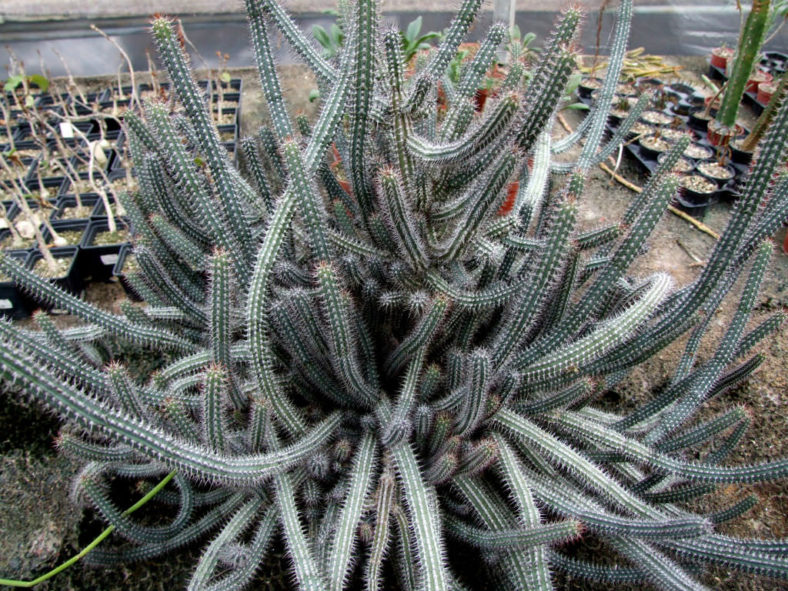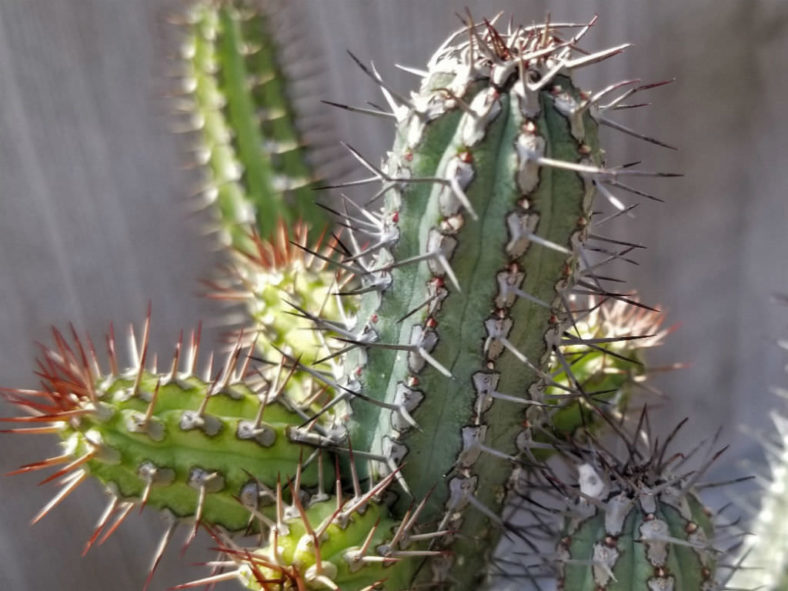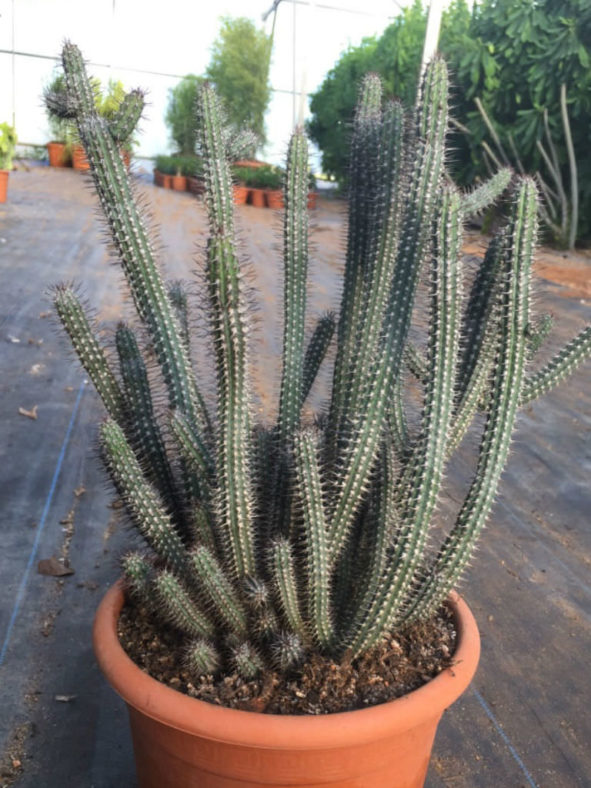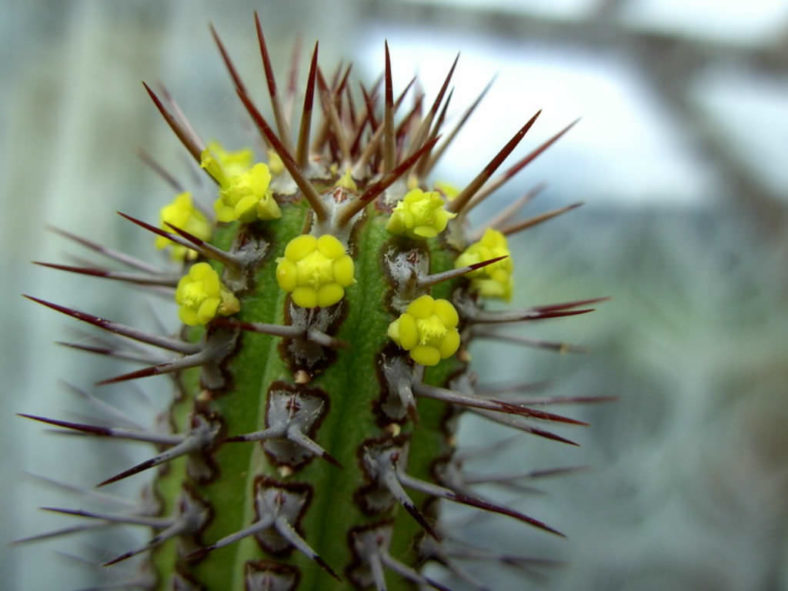Scientific Name
Euphorbia baioensis S.Carter
Scientific Classification
Family: Euphorbiaceae
Subfamily: Euphorbioideae
Tribe: Euphorbieae
Subtribe: Euphorbiinae
Genus: Euphorbia
Etymology
The specific epithet "baioensis (bay-oh-EN-sis)" refers to the Baio, a mountain in Kenya where this species was first discovered.
Origin
Euphorbia baioensis is native to Kenya. It is found in tropical deserts.
Description
Euphorbia baioensis is a small succulent shrub with greyish-green, upright or decumbent stems. It is mainly branched at the base. The cylindrical stems can reach up to 1 foot (30 cm) in lenght and 0.4 inches (2 cm) in diameter. They have 8 to 10 ribs with a pair of spines on each spine shield. The spines are grey with red tips when young, become black with age, and can grow up to 0.4 inches (1 cm) long.
The flowers are small, pale yellow, and appear from spring to summer.

How to Grow and Care for Euphorbia baioensis
Light: Most Euphorbias are sun lovers, but some will tolerate partial shade. Place your indoor Euphorbias on windows with southern or southeastern exposure.
Soil: Euphorbias require well-drained soil. They even thrive in poor, dry soils. Use a commercial mixture formulated for cacti and succulents, or make your own potting mix.
Hardiness: Euphorbia baioensis can withstand temperatures as low as 35 to 50 °F (1.7 to 10 °C), USDA hardiness zones 10b to 11b.
Watering: Succulent Euphorbias can survive drought, but that does not mean they need it. From spring to fall, water when the top inch of soil feels dry. Reduce watering in winter. Give them just enough water to prevent wilting.
Fertilizing: Every Euphorbia will benefit from fertilizer. Apply a balanced fertilizer in a 10-10-10 NPK formulation, diluted to 1/4 strength weekly during the growing season.
Repotting: Euphorbias do not need to be repotted every year. However, when your Euphorbia is outgrowing its pot, it is time to repot the plant in a larger pot and give it a fresh potting mix.
Propagation: The easiest and fastest method of propagation for many species is by using cuttings. Euphorbias can also be grown from seeds, but they can be difficult to germinate and even hard to find.
Learn more at How to Grow and Care for Euphorbia.
Toxicity of Euphorbia baioensis
All Euphorbias produce a toxic white milky sap and can irritate the skin and eyes. Therefore, keeping the plants away from children and pets is best.
Links
- Back to genus Euphorbia
- Succupedia: Browse succulents by Scientific Name, Common Name, Genus, Family, USDA Hardiness Zone, Origin, or cacti by Genus
Photo Gallery
Click on a photo to see a larger version.


